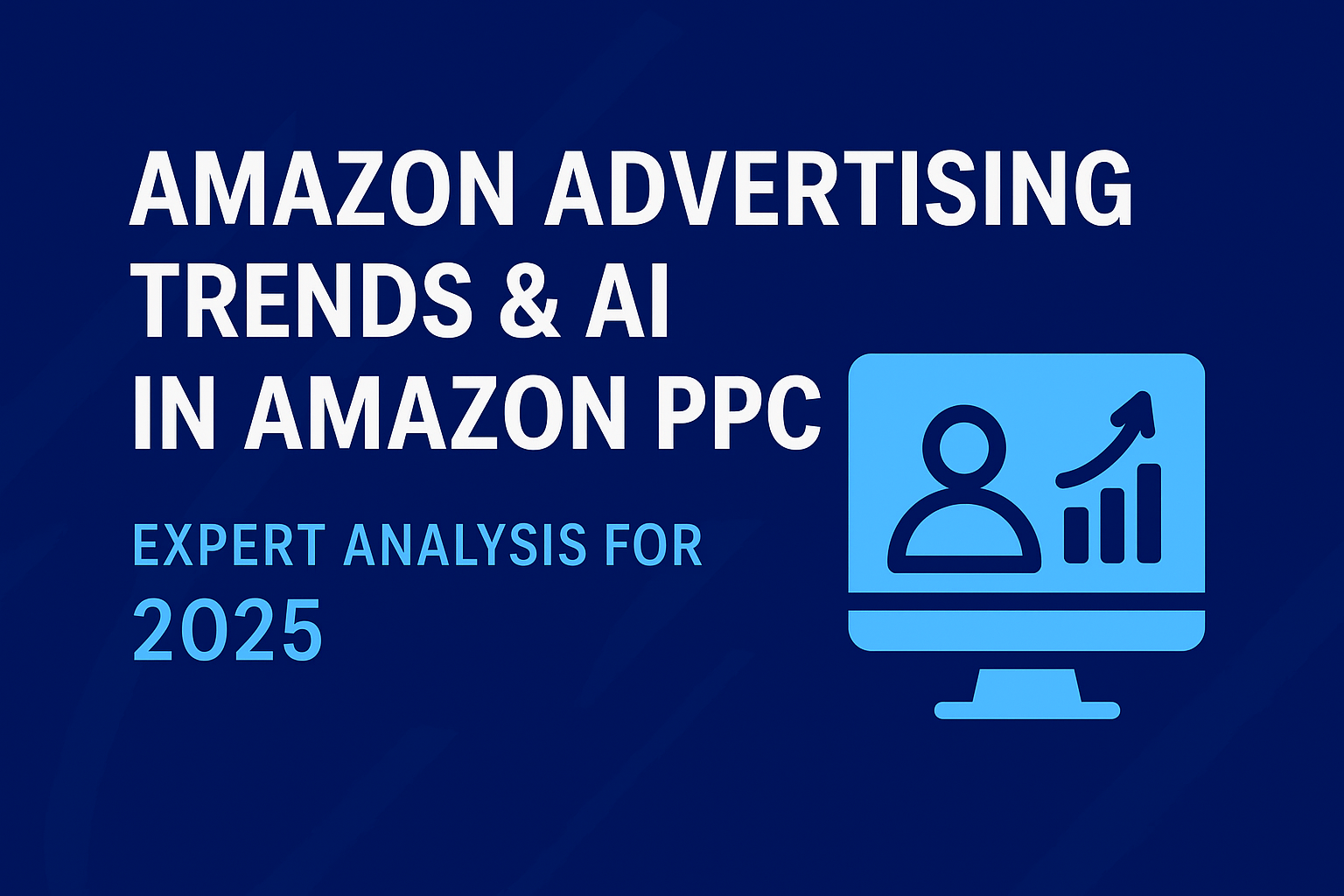Address
304 North Cardinal St.
Dorchester Center, MA 02124
Work Hours
Monday to Friday: 7AM - 7PM
Weekend: 10AM - 5PM

Amazon’s advertising ecosystem is undergoing rapid transformation. In 2025, AI in Amazon PPC is no longer sci-fi — it’s becoming mainstream. Simultaneously, broader Amazon advertising trends such as video ads, attribution changes, and generative creative tools are reshaping how brands compete. For sellers and agencies aiming to stay competitive, understanding these developments is critical.
In this article, we will:
The target keywords are: amazon advertising trends, ai in amazon ppc.
Amazon itself is rolling out AI tools to assist advertisers in producing video, image, and audio assets quickly. These tools can generate campaign-ready creative from minimal input, reducing the time and cost barrier for sellers. Amazon Ads
For example, Amazon’s Video Generator allows sellers to transform still images into short product videos (≈ 21 seconds), complete with motion, overlays, and background music — often within minutes.
This democratizes access to video advertising, making high-engagement formats accessible to more sellers.
Video ads are gaining priority across Amazon’s ad surfaces — Sponsored Brands Video, video creatives in DSP, and dynamic video creatives in display are becoming standard tools in top sellers’ arsenals.
These ad formats tend to achieve better engagement, higher click-through rates, and more compelling storytelling — which in turn support conversion and brand lift.
“Smart bidding” powered by AI is becoming a must-have. Tools and platforms are introducing AI-based dayparting (i.e. hour-by-hour bid adjustments) and predictive bidding to optimize both cost and conversions. Sellers report ACoS reductions of 30–40% using such strategies.
In effect, AI helps shift from static bid strategies to dynamic, context-aware bidding.
Amazon has introduced a more robust Multi-Touch Attribution (MTA) model for 2025. This enables advertisers to allocate conversion credit across multiple ad touchpoints, rather than a simple last-click model.
This shift matters: better attribution insights allow smarter budget allocation across campaigns, creatives, and placements.
The boundary between Amazon’s ad types — Sponsored, DSP, Display — is blurring. More advertisers are integrating data and strategies across channels. Using Amazon Marketing Cloud (AMC) and cross-channel analytics is among the top trends.
This trend enables more holistic performance measurement and budget allocation across touchpoints.
“AI in Amazon PPC” refers to multiple layers of capability:
These capabilities cooperate to reduce wasted spend, improve conversion efficiencies, and scale performance.
A U.S. seller of fitness supplements used an AI-powered dayparting engine across their Sponsored Products campaigns. By analyzing historical hourly conversion patterns, the AI raised bids aggressively during 6–9 AM and 7–10 PM where conversions peaked, and cut back during overnight hours.
Results observed over 2 months:
This reflects the kind of uplift seen in early case reports from AI dayparting adoption.
It’s tempting to be “hands-off” when AI handles bidding, but human oversight is still critical to:
Top-performing brands adopt a human + AI collaboration approach, not pure automation.
Here’s a structured playbook you can follow to get ahead:
| Step | What to Do | Why It Matters |
|---|---|---|
| 1 | Audit current campaigns and creative formats | Understand baseline in CTR, conversion, creative types |
| 2 | Pilot generative creative tools | Leverage Amazon’s Video Generator (or third-party) to test video formats |
| 3 | Turn on AI-powered bidding modules / dayparting | Shift toward responsive, dynamic bidding instead of static |
| 4 | Integrate attribution data | Use Amazon’s MTA or third-party analytics to understand full funnel |
| 5 | Unify Sponsored + DSP strategy | Use AMC or cross-channel reporting to align bidding & placements |
| 6 | Monitor & iterate with human review | Check for creative drift, outliers, or AI misallocations |
| 7 | Expand AI use gradually | Apply new AI models to more budgets or campaigns once trust is built |
The convergence of amazon advertising trends and ai in amazon ppc marks a turning point: the tools that used to be available only to advanced sellers are now democratizing. Creative generation, bid automation, dayparting, and better attribution all reduce friction and waste.
To win in 2025 and beyond: